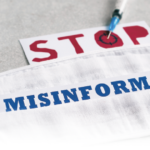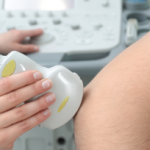At the end of the day, we may never know exactly what happened at this meeting. The Washington Post story was based on anonymous sources, and most of the subsequent news reports simply quoted The Washington Post. Despite this, social media has lost no time dissecting official statements from the CDC and the Department of Health and Human Services, trying to parse the difference between what has and has not been said. It seems possible that some of this has to do with a variation of grantsmanship—the words may not be forbidden, but it may have been noticed that some words receive a warmer reception than others. A well-meaning official may have just been trying to ensure that budget requests sailed through the approval process. Even this is a problem, however.
Language is how we crystalize the world around us. We cannot hope to solve a problem we cannot name. The suspicion that some words are less welcome than others could lead to self-censorship, subtly guiding investigators toward proposals with fewer minefields.
In July, a new cohort of trainees will descend on my institution. As in past years, I am sure they will roll their eyes at me as I talk about parallel structure and the Oxford comma. In addition to making unwanted comments about grammar and style, I also hope to communicate to them that words matter. In clinical training, we are taught to make “evidence-based” recommendations to patients; that’s not exactly the same thing as making a recommendation that is “consistent with community standards.” The free exchange of ideas—and of words—is intrinsic to how science operates. More importantly, words are how we inspire, we persuade and we excite.
 Philip Seo, MD, MHS, is an associate professor of medicine at the Johns Hopkins University School of Medicine, Baltimore. He is director of both the Johns Hopkins Vasculitis Center and the Johns Hopkins Rheumatology Fellowship Program.
Philip Seo, MD, MHS, is an associate professor of medicine at the Johns Hopkins University School of Medicine, Baltimore. He is director of both the Johns Hopkins Vasculitis Center and the Johns Hopkins Rheumatology Fellowship Program.
A Personal Note on Assuming the Role of Editor
In Simon Helfgott’s last column for The Rheumatologist, he wrote, “to tell the truth, when I assumed the role of physician editor I had no idea about what I was actually getting into.” Truer words were never spoken. I had applied for the position largely assuming that it would go to someone more talented and more qualified. You are likely as surprised as I am to find that I am now writing this column.

